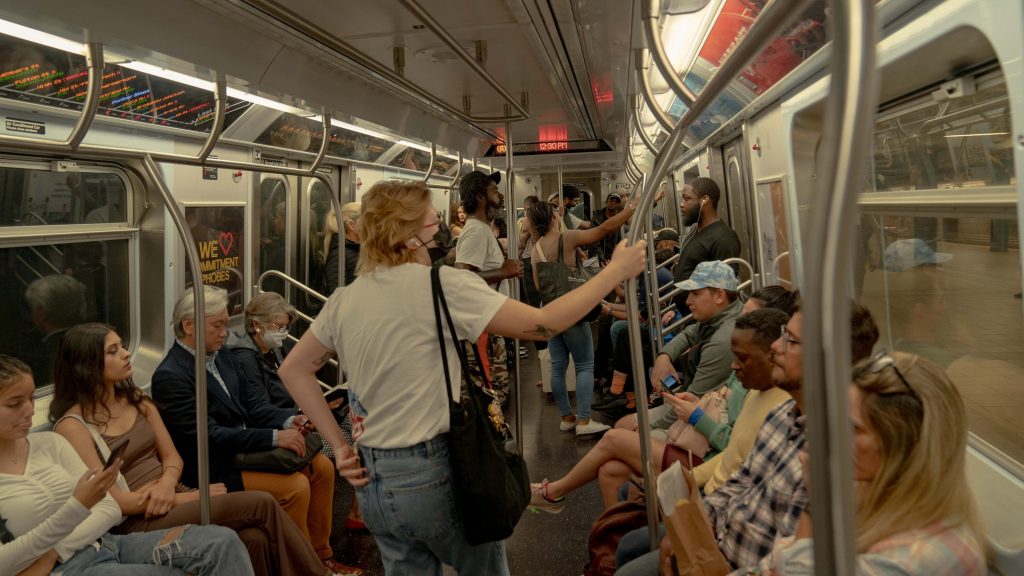In the glittering realm of iconic cities, New York City and London reign supreme as bastions of culture, finance, and dreams. They are the dazzling stars that have captured the hearts and imaginations of millions, drawing people from all corners of the globe. Yet, beneath the shimmering surface lies a stark reality: living in these metropolises comes at a cost. Today, we embark on a journey to unravel the intricacies of this economic conundrum and delve into the question that has intrigued many “What makes New York City more expensive than London?”
Imagine walking through the bustling streets of Manhattan, the towering skyscrapers reaching for the heavens, and the vibrant energy pulsating through the air. It is a city that never sleeps, but it comes with a price. On the other side of the Atlantic, London casts its own enchantment, with its historic landmarks, charming neighborhoods, and a regal allure that echoes throughout its streets. However, beneath the surface, a tale of financial disparities unfolds.
In this exploration, we will uncover the factors that contribute to New York City’s higher expenses compared to London. We will dissect the housing market, decipher the intricacies of the cost of living, analyze the impact of taxes, examine the realm of entertainment and dining, and traverse the paths of job opportunities and salaries. Brace yourself for an immersive journey that reveals the inner workings of two captivating cities and sheds light on the enigma of their economic landscapes.
Housing Costs
Housing costs play a significant role in the higher cost of living in New York City compared to London. The expenses associated with renting or owning a home in the Big Apple are considerably higher than in London. Rent prices, in particular, showcase the disparity between the two cities.
In New York City, the average cost of renting a one-bedroom apartment in the city center is approximately $3,800 per month. This is nearly 47% higher than the cost of a comparable apartment in London, which would amount to around $2,600 per month. Such a substantial difference in rental prices can exert immense pressure on the budgets of New Yorkers, contributing significantly to the overall higher expenses in the city.
The reasons behind the exorbitant housing costs in New York City are multifaceted. Firstly, the city’s limited land availability and high demand for housing result in fierce competition for housing units, driving up prices. Additionally, New York’s status as a global financial and cultural hub attracts a large number of high-income individuals who are willing to pay a premium for desirable locations and luxurious amenities.
Furthermore, the cost of construction and maintenance in New York City is often higher than in London due to factors such as stricter building regulations, higher labor costs, and the logistical challenges associated with building in a densely populated urban environment. These factors contribute to the higher costs associated with housing in the city.
In contrast, London benefits from a more balanced housing market, with a wider range of affordable options available to residents. While housing costs in the UK capital have been rising in recent years, they have not reached the same levels of New York City. London’s relatively lower housing expenses can provide some relief to residents and contribute to a more affordable cost of living compared to its American counterpart.

Cost of Living
The disparity in the cost of living between New York City and London extends beyond housing expenses. The overall cost of living in New York City surpasses that of London, making it a more financially demanding city to reside in. Numerous factors contribute to this discrepancy, including higher grocery prices, transportation costs, healthcare expenses, and other everyday necessities.
Groceries play a significant role in the higher cost of living in New York City. On average, groceries are approximately 70% more expensive in New York compared to London. Whether it’s fresh produce, dairy products, or everyday pantry items, New Yorkers often find themselves paying a premium for their groceries. The higher costs associated with food shopping can strain budgets and impact the financial well-being of residents.
Transportation expenses also contribute to the higher cost of living in New York City. While both cities have robust public transportation systems, the costs associated with commuting and getting around in New York tend to be higher. Factors such as higher fares, tolls, and the overall cost of maintaining a vehicle in the city contribute to the increased transportation expenses for New Yorkers.
Healthcare expenses in New York City can also be higher compared to London. With a robust healthcare system and world-class medical facilities, healthcare costs in the city can be substantial. Insurance premiums, copayments, and out-of-pocket expenses for medical services can place an additional burden on residents’ budgets.
Other everyday necessities, such as utilities, personal care items, and entertainment, also tend to be more expensive in New York City. These additional costs can add up and further contribute to the overall higher cost of living in the city.
The disparities in the cost of living between New York City and London significantly impact the affordability and financial well-being of New York residents. It is crucial for individuals living in or considering a move to New York to carefully evaluate and plan their budgets to ensure they can meet the increased expenses associated with everyday necessities. Proper financial planning and budgeting can help navigate the higher cost of living in the city and ensure a more secure financial future
Taxes
When it comes to taxes, there are some notable differences between New York City and London. In the United Kingdom, the tax burden, which includes income tax and value-added tax (VAT), tends to be higher compared to the United States. Londoners generally bear a greater tax load than New Yorkers. However, it is important to note that the gap in local income taxes narrows when comparing New York City to the rest of the country.
New York City stands out within the United States in terms of its tax structure. It has the highest top personal income tax rate when state and federal taxes are combined. This means that individuals with higher incomes in New York City face a significant tax burden. The state tax system adds an additional layer to federal tax rates, resulting in relatively high tax rates for residents. Even individuals with relatively modest incomes may find themselves facing tax rates in the high 30s or low 40s in New York City.
On the other hand, London’s tax system follows the progressive tax model, where higher-income earners face higher marginal tax rates. The United Kingdom has four tax brackets, with the highest rate set at a little over £125,000 or around $157,000 USD. This relatively low threshold for such a high rate can impact high-income earners in London.
While taxes play a significant role in the overall cost of living, it is essential to consider the broader context of public services and benefits provided by the government. The higher taxes in the United Kingdom often contribute to a robust social welfare system and public services. In contrast, in the United States, expenses for services such as healthcare and education are typically borne by individuals on top of their taxes.
Entertainment and Dining
Entertainment and dining in New York City are renowned for their extravagance, offering a vast array of options to satisfy any taste or interest. However, indulging in the city’s vibrant cultural scene comes at a cost. New York City’s reputation as the cultural capital of the world contributes to its higher entertainment and dining expenses compared to London.

In New York, there is an unparalleled variety of high-end restaurants, Michelin-starred eateries, and trendy dining establishments. These venues boast celebrity chefs, innovative culinary experiences, and exquisite menus, all of which command premium prices. Dining out in New York City is often seen as an event in itself, with people willing to splurge on memorable gastronomic experiences. From luxurious steakhouses to trendy fusion cuisine, the city’s culinary landscape caters to diverse tastes and demands.
When it comes to entertainment, New York City offers a rich tapestry of theatrical performances, Broadway shows, concerts, and cultural events. Attending a Broadway production or a live concert by world-renowned artists can be a transformative experience. However, the cost of tickets for these shows can be significantly higher compared to similar events in London. The demand for these performances, coupled with the limited availability of tickets, drives up the prices. Furthermore, other forms of entertainment such as museums, art galleries, and exclusive social clubs also contribute to the overall higher costs in New York City.
Another factor contributing to the higher expenses is the tipping culture prevalent in the United States. In New York City, it is customary to leave a gratuity of 15% to 25% on top of the bill at restaurants and bars. This additional cost, along with taxes and potentially a service fee, increases the overall price of dining out and enjoying the city’s nightlife.
It’s worth noting that London also offers a vibrant entertainment and dining scene. However, the range of high-end options and the cultural significance of New York City’s establishments often come with premium price tags. While there are more affordable alternatives available in both cities, the culture of spending and the desire to experience the best that New York City has to offer contribute to its reputation as an expensive destination for entertainment and dining.
Job Opportunities and Salaries
Job opportunities and salaries play a significant role in understanding the cost of living disparities between New York City and London. Although the expense of living in New York City is higher, residents tend to earn more, which helps alleviate some of the financial strain. On average, a New Yorker earns close to $1,400 per week, whereas a Londoner’s average weekly income is a little less than $1,000.
The higher salaries in New York City can provide residents with greater purchasing power within the city. Despite the elevated cost of living, the higher income levels allow New Yorkers to allocate more resources toward housing, daily expenses, and discretionary spending. The additional financial capacity can make certain aspects of city life more manageable, such as affording housing in desirable neighborhoods or enjoying a wider range of leisure activities.
In contrast, while London offers its residents diverse job opportunities, the average income tends to be lower compared to New York City. The slightly lower average income in London can make it more challenging for residents to comfortably navigate the higher cost of living. However, it’s important to consider that the salary differential may vary across industries and professions. Some sectors in London may offer competitive compensation packages, narrowing the income gap between the two cities for certain individuals.
Public Transportation
Public transportation plays a crucial role in making both New York City and London accessible and reducing the reliance on private car ownership. However, there are notable differences in the fare structures and characteristics of the public transportation systems in these two cities.
In New York City, the subway system is a lifeline for millions of residents and visitors alike. Operating 24/7, it offers a fixed fare of $2.75 per ride, regardless of the distance traveled within the system. The New York City subway is an extensive network with more stops than all other cities in the United States combined, ensuring that commuters have convenient access to various neighborhoods and destinations throughout the city. This affordability and widespread coverage make it a popular and cost-effective option for daily commuting.

On the other hand, London’s public transportation is renowned for the iconic Tube network. The London Underground, or the Tube, is recognized for its cleanliness, reliability, and efficiency. Unlike New York City’s flat fare system, London’s fare structure is based on the distance traveled. The further one travels, the more they pay. This zonal fare system allows for more flexibility and accommodates the varying distances commuters may need to cover. Additionally, London’s public transportation system extends beyond the Tube, incorporating buses, trams, and trains, providing comprehensive coverage throughout the city and its surrounding areas.
Both New York City and London prioritize public transportation as a convenient and cost-effective alternative to private vehicles. Their well-developed systems not only reduce traffic congestion but also contribute to the overall sustainability and livability of these global cities. Whether it’s New York City’s expansive subway system or London’s efficient Tube network, residents and visitors benefit from accessible and reliable transportation options that help navigate these bustling metropolises.
Final Thoughts
New York City’s status as one of the most expensive cities in the world is influenced by various factors. The higher housing costs, overall cost of living, entertainment expenses, and taxes contribute to the city’s reputation for being pricey. However, it’s important to note that New Yorkers also tend to earn more, which can offset some of the higher expenses. Ultimately, the decision to live in New York City or London depends on individual preferences, job opportunities, and lifestyle choices.
While New York City may come with a steeper price tag, it offers unparalleled career prospects, cultural experiences, and a vibrant atmosphere that has captivated the imagination of millions. London, with its rich history, diverse communities, and thriving cultural scene, presents its own allure. Whether one chooses the bustling streets of New York City or the cosmopolitan charm of London, both cities offer unique opportunities and experiences that continue to attract people from around the world, despite the associated costs.
